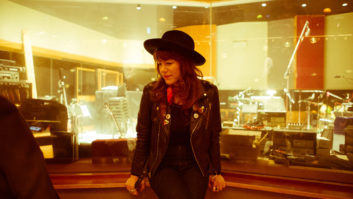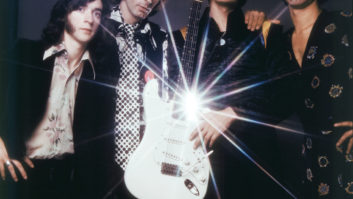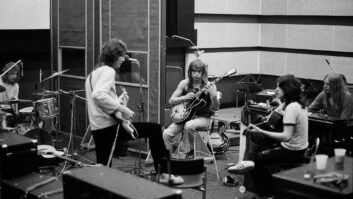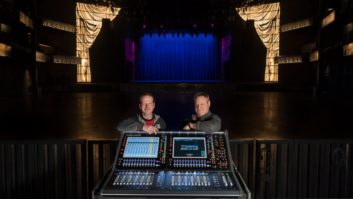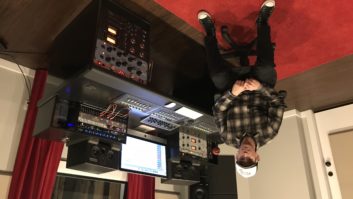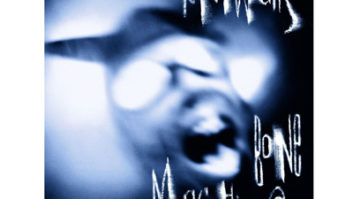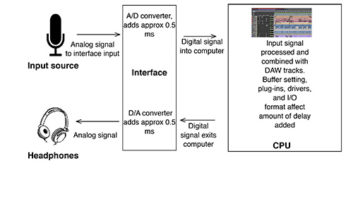
It might be January for you, but I’m writing this in October, still recovering from the AES show and already thinking about NAMM. Simultaneously living in the past, present and future is not exclusive to the publishing biz. We of the audio persuasion embrace tubes, transistors and DSP almost without dropping a frame.
Nothing is more varied than electric guitar technology and, like any analog system with a loudspeaker, it interacts with its surroundings. The large difference that exists between an amp’s sound pressure level during Record mode and its playback level on the control room monitors is enough to raise Fletcher and Munson from the dead.
Think about the simple difference between what a guitar player hears from “way up high” and a mic’s interpretation of the speaker cabinet on the floor. For any engineer who’s ever heard the playback comment, “It’s much brighter than it was in the studio,” I highly recommend trying any ribbon mic on the amp. Royer ribbons are nice, but the original Sennheiser MD409 and e609 dynamics are also similarly smooth in the midrange. Sennheiser’s new silver version of the e609 has a pronounced midrange boost similar to that of a Shure SM57.
DIFFERENT STRIPES
Guitar sounds are a personal issue, bringing forth a matter of deep religious conviction and highly subjective opinions. Some guitarists prefer diode clipping, along with the gain required for ultimate sustain. I recently loaned a Tweed-era Gibson amp to some local high school kids who reported that the amp didn’t distort, and by their standards, I guess it didn’t!
When I first heard Jack White of the White Stripes play, my finger was poised to change channels. But his radical guitar sound changes at each section of the tune were both sonically impressive and sensitive, demonstrating a need for dynamics around the vocals. Some of the most abysmal guitar sounds I ever heard were broadcast on the recent Grammy™ Awards. Were these crimes of audio committed by veteran players or “our own people”?
My biggest beef with electric guitar sounds of the rock persuasion is the lack of dynamics. Rock ‘n’ roll arrangement is at times like digital logic — on or off — although the latter is better than plowing through a vocal with power chords. The guitar work on The Divinyls classic self-titled album, which includes the single “I Touch Myself,” is but one example of tasteful and creative playing. A good player trumps all technology. Just listen to the albums Chet Atkins performed on with Les Paul and Mark Knopfler.
ABUSE REDUCTION
A “bad” guitar sound is an invitation for modifications. Overdesigned amps combined with “operator error” lead to common misadjustments. Some guitar amps and processors fall into a similar category as recording consoles: fast food aimed to please many people in a hurry, but with few gourmet morsels worth savoring.
I have a short list of mods designed to “reduce the abuse.” Only a geek would suggest that guitar amps indicate a “flat” location. Last year, I modified a Fender Champ so that its bass knob was flat at maximum and the treble control was flat at minimum. It wasn’t a huge change, but it did provide a reference point and a good place for the player to start. That, along with another top-secret mod, has made it the studio’s most popular amp. All it needs now is an effects loop.
Granted, a 12-inch speaker, guitar or otherwise, is incapable of flat full-range response, yet when all is in harmony, an overdriven amp will add harmonics to the fundamental. However, applying all of the possible treble-boosting options at once can often create harmonic distortion of upper-string harmonics. That’s my impression of what can make a Marshall sound bad.
TAP TEST
Next on the list is the power amp section. The earliest guitar amps from the Tweed era did not have negative feedback, a simplicity that yielded higher distortion and allowed the speaker to emote more character. Feedback reduces distortion, extends frequency response and increases “damping factor.”
Damping factor is the speaker impedance divided by output amp impedance. A larger number implies greater dominance by the amp over the speaker. Alternately connect and disconnect any nonpowered monitor (while the amp is powered but with no signal) while tapping on the woofer. The woofer will be warm when disconnected from the amp and tight or dry when connected. The lack of a significant damping factor is one reason vintage amps sounded so rich on the bottom and so relaxed when overdriven.
The figure shows the power amp section from a Fender Super that Marshall basically copied for its amplifiers. The blue line indicates the feedback path. My blue arrow mod replaces the 1,500-ohm resistor with a pot to dial the feedback in or out. To the right, the Presence control adds treble by reducing the amount of high frequencies in the feedback loop. For some applications and players, this may be fine, but considering the number of ways some amps allow users to boost treble, why not just add a tweeter?
REVERSE FAN
At last year’s AES Convention, I met guitar ace Lee Roy Parnell. He reads this column, plays guitar effortlessly and likes to talk about music and gear. We hit it off instantly. The difference between the AES and NAMM shows is that I listened to him play on headphones at the Ultrasone booth rather than compete with a cacophony of sonic blasts, respectively. We did some mutual brain-picking. I asked about his favorite amps and settings, intonation, chord inversions and, specifically, about how to communicate with young guitar players. What was truly cool was that Lee Roy responded as if we had picked up threads from previous conversations.
Recording engineers generally scrutinize guitar sounds differently than guitar players. You might say engineers are from Mars and guitar players are from Venus. Mostly, it is a matter of perspective, because being a recording engineer is kind of like putting on the most sound-blocking earplugs you can find and shoving your head into a jet engine. My guitar amp distortion preference requires the least amount of power: 7 to 15 watts, tops. When Lee Roy told me one of his favorite amps was a Marshall, I asked him if he had any use for the Presence control. He prefers the counterclockwise position.
HEARING CLAMS?
I recently built a small FM transmitter kit with a wall wart power supply. Moving the power cable minimized or maximized the hum and buzz being transmitted, which suggested an idea to help all those guitar pedals and other units with external supplies. The next time you experience hum, buzz, radio or television interference, attach a snap-on ferrite clamshell to the cable where it goes into a device. No guarantees, but definitely worth a few bucks and moments of your time. It might be the easiest of all possible fixes!
Thinking about the new year in October allowed Eddie to audition a few 2004 resolutions. Visitwww.tangible-technology.comto see which one he found most practical.
